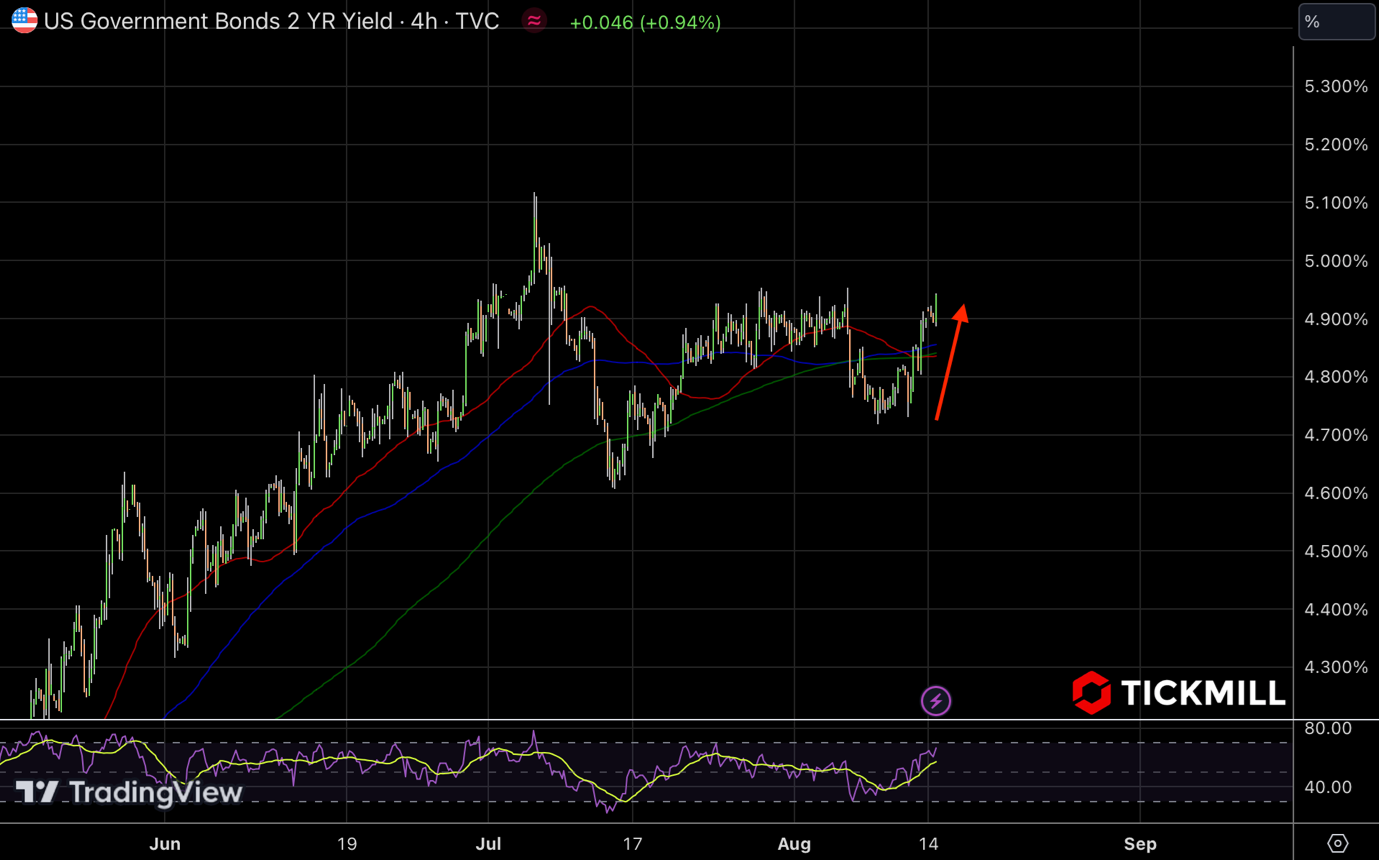Slowing China Economy and High US Rates Fuel Bullish Bets on the Dollar, Setting Cautious Tone in Equities

Asian markets tumbled on Monday, with the Chinese yuan nearing its lowest level since the end of June (also the year's minimum). Caution dominates European exchanges and US equity futures. China's 5-year credit default swap rate rose 5 basis points on Monday, reflecting the growing concerns in the country's financial sector, particularly the increasing risk of default for major developer Country Garden:

These issues are compounded by the weak data from the Chinese economy, including producer price deflation, a sharp drop in foreign trade volumes in July, and a slowdown in credit growth. Markets anticipate stimulus measures from the People's Bank of China, such as reducing short-term bank lending rates and lowering banks' reserve requirements to boost lending potential. Investors are adjusting their portfolios to reduce exposure to Chinese assets, likely putting pressure on the yuan and other Asian markets.
The dollar started the week on a strong note, but the currency market remains calm as it awaits fundamental information from the Federal Reserve and the US economy. Retail sales data in the US (scheduled for tomorrow) and the Fed minutes on Wednesday are this week's highlights. Last week's US inflation report for July had a mixed impact. Despite a positive surprise in core inflation (4.7% on a yearly basis versus a forecast of 4.8%), service sector inflation accelerated (from 0.3% in June to 0.4% in July), while shelter inflation remained unchanged at 0.3%. These two key inflation components (which form the main trend due to their slow variability) led to some Federal Reserve officials refraining from drawing conclusions about the September's decision based on the report. They hinted that more data in August would be needed for analysis. As a result, the dollar quickly rebounded after the CPI release, and bond yields, particularly short-term rates, rose again to pre-CPI levels:

While EUR/USD weakens, the euro index remains close to its year's highs, suggesting the strengthening of the American currency. Data on the eurozone and official speaker calendars for this week are quite unremarkable. We will only see GDP revisions for the second quarter of this year and ZEW investor surveys. Unless there is an unexpected turn of events regarding monetary stimulus in China, EUR/USD may break below support at 1.0925, potentially testing 1.0830.
The UK releases two important data sets this week: employment and prices. Tuesday's employment data is expected to show that average earnings continue to grow at a rate of 7% per year. Sterling may face challenges with Wednesday's July consumer price data, where service sector inflation is likely to surprise on the downside, impacting expectations for an additional 50-basis-point tightening from the Bank of England.
Disclaimer: The material provided is for information purposes only and should not be considered as investment advice. The views, information, or opinions expressed in the text belong solely to the author, and not to the author’s employer, organization, committee or other group or individual or company.
Past performance is not indicative of future results.
High Risk Warning: CFDs are complex instruments and come with a high risk of losing money rapidly due to leverage. 71% and 70% of retail investor accounts lose money when trading CFDs with Tickmill UK Ltd and Tickmill Europe Ltd respectively. You should consider whether you understand how CFDs work and whether you can afford to take the high risk of losing your money.